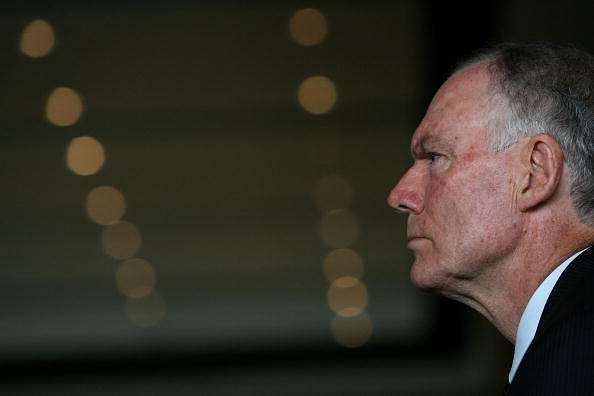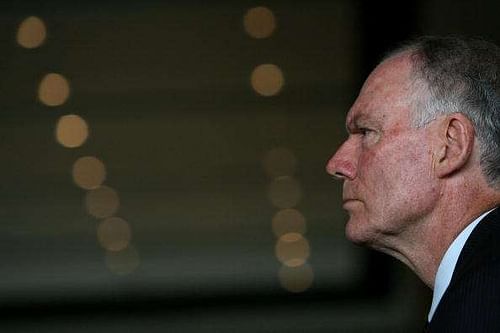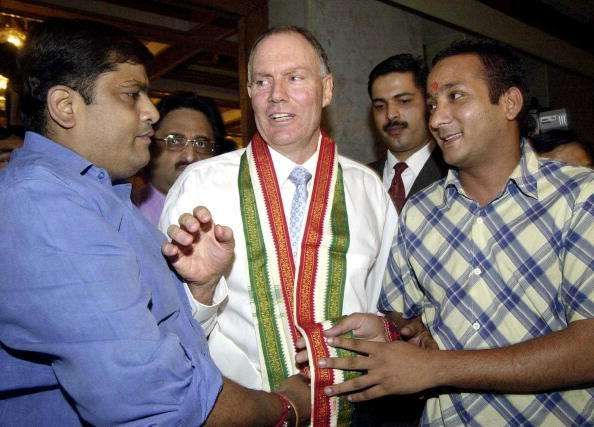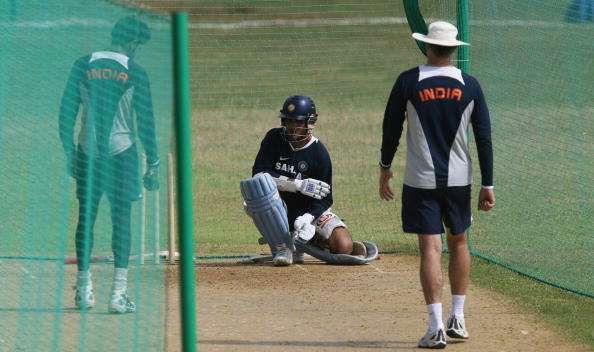
How Team India crumbled under Greg Chappell: Part-1
Months before India tasted glory by triumphing in the inaugural edition of the World T20 in 2007, they had been humiliated in the 50-over World Cup, crashing out in the first stage by losing first to minnows Bangladesh, and then Sri Lanka. Considered one of the strongest teams in the competition, and featuring the best possible combination, India faltered badly at the biggest stage. It brought an end to Greg Chappell’s controversial regime as Team India’s coach.
The failure led to widespread protests by raging fans throughout the country. Effigies were burnt, protests were carried and slogans were raised outside the houses of cricketers. Yet, the fire had started in the dressing room way before India’s actual loss in the Caribbean.
We look back at one of the darkest periods of the Indian dressing room, when the seeds of mistrust were sown, leading to turmoil amongst players and fans alike.
In part one, we cover Chappell’s accession to the Team India coach’s job and the subsequent sacking of Sourav Ganguly as the team captain. In a documentary titled ‘Guru Greg’, Chappell has given a descriptive account of what transpired in the dressing room when the feud between him and Ganguly started.
CHAPPELL’S SELECTION
When John Wright decided not to extend his term as the Team India at the end of 2004, the BCCI started a hunt for the Kiwi’s best possible replacement. Ranbir Singh Mahendra, the then President of the BCCI was in charge of the apex body comprising of Sunil Gavaskar, Ravi Shastri and R Venkataraghavan. Sourav Ganguly, the captain in both formats, wholeheartedly supported the decision to select Chappell over the likes of Dav Whatmore, John Emburey, Mohinder Amarnath, Desmond Haynes, Graham Ford and Tom Moody.
When he finally got the job in May 2005, he greeted the press by saying that it was one of the most exciting and challenging jobs in cricket, and he looked forward to it. He had a clear-cut mission: Steering India to World Cup glory in two years’ time.
22 years after his infamous underarm incident, Chappell was back at the international level, albeit in a different capacity. The team, one of the strongest on paper, had the experience of a number of big stars.
The biggest challenge for Chappell was the challenge of performance, as was pointed out by Lalit Modi, then the Vice-President of the BCCI, in the documentary
Things did not start of as one would have expected. Ganguly, still under suspension from slow over rates in the Pakistan series, was not available to be selected for the Sri Lanka series. Rahul Dravid was appointed as captain, leading the side to a thumping 6-1 victory.
As the suspension got over, Ganguly was reinstalled as the head of the team for the tour to Zimbabwe. Before the tour started, differences started to crop up between Ganguly and Chappell, a comprehensive narration of which was revealed in a leaked email from the latter.
THE LEAKED EMAIL
In a mail addressed to Ranbir Singh Mahendra, the then president of the BCCI, Greg Chappell took potshots at Sourav Ganguly approach to the game.
He starts off by categorically stating that he had neither asked Ganguly to step down, nor did he have any intentions of vacating the coach’s post, after reports started coming out that the captain and coach were having differences before the tour.
Chappell accused Ganguly of being prone to panic, a habit that affected the morale of the rest of the team. He said that Ganguly would tinker a lot with the batting order, leading to nervousness and ‘wrong signals’ amongst the players. He also admonished Ganguly’s habit of pacing up and down the dressing room during the team’s batting, stating that it pressurized the other members of the team.
An agitated Chappell suggested Ganguly to step down from the captaincy role to focus better on his playing career.
Chappell accused Ganguly of faking injuries : He narrates an incident during the Zimbabwe tour where Ganguly allegedly shied away from facing the new ball by faking a shoulder injury during a game against the A-side.
He saw Ganguly walk off with what seemed like a blow from a bouncer. He had complained of a recurring pain in his shoulder throughout the one-day series, but hadn’t been taking proper medication or acknowledging advice from the physios.
Even though John Gloster suggested further tests on the same, Ganguly rejected them by saying he was fine. After the ball was 20 overs old, he was back in the middle, “struggling for runs”, as Chappell put it. He recalls how other players brushed off the attitude by saying that Ganguly seldom had these ‘mysterious injuries’ that came as quickly as they went.
Chappell then decided to flat out tell Ganguly that he had serious doubts about picking him for the first Test based on his mental state. Ganguly asked if Chappell thought he would be the right person to lead the team. Chappell named youngsters like Yuvraj Singh and Mohammad Kaif as ideal replacements for Ganguly based on their good form in the preceding ODI series.
Ganguly then told Chappell that he if didn’t want him in the team, he would talk to Rahul Dravid and discuss a possible resignation. Later, team director Amitabh Chowdhary came into the dressing room and informed Chappell that Ganguly had decided to leave Zimbabwe if he was not part of the team. Dravid, Chappell and Chowdhary then sat down with Ganguly, convincing him to stay, because the effects of his sudden departure would have been detrimental to the team.
According to the documentary, when Ganguly didn’t like Chappell’s advice, he actively started working against him. Chappell concedes that Ganguly had initially been his supporter, and without him, he might not have got the job at all. Yet, he believed that he didn’t owe a lifetime to Ganguly.
Later, VVS Laxman came up to Chappell and told him that Ganguly said that the coach wanted Laxman out of the team. When a meeting took place between the trio, Ganguly, according to the mail, ‘rambled about’ how Chappell didn’t see a place for Laxman in the ODI team, but didn’t discuss anything about the alleged conversation between the two.
According to Greg King’s reports, Ganguly was ranked to do the least physical and training work in the team, falling below par in the parameters developed by the coaching staff.
Ganguly did play the first Test, scoring his first century in 20 months. The innings was painstakingly slow, but an important one from Ganguly’s perspective. He said that the calls for his resignation gave him extra determination to perform well.
“From an Indian cultural perspective, if you do someone a favour, they owe you for life. I think Sourav thought that is the way it is going to be,” Chappell said in the documentary.
“He was the best competent person at that time and his presentation impressed us all. Chappell did well till his differences with Ganguly surfaced. I was told that the team was not united, but that was only upon hearsay and the issues were sorted out thereafter,” said Mahendra later.
Ganguly was left out from India’s Test squad for the series against England in February 2006. Kiran More, the chief selector, stated that “Ganguly had been dropped based on his performances and keeping in mind the future of the team”.
In part 2, we will cover India’s tour of South Africa in 2006, when Sourav Ganguly made a sensational comeback, forcing his way back to the Indian team to participate in his third consecutive World Cup.


